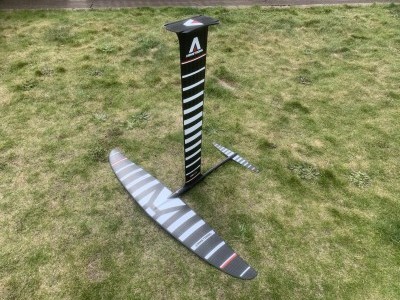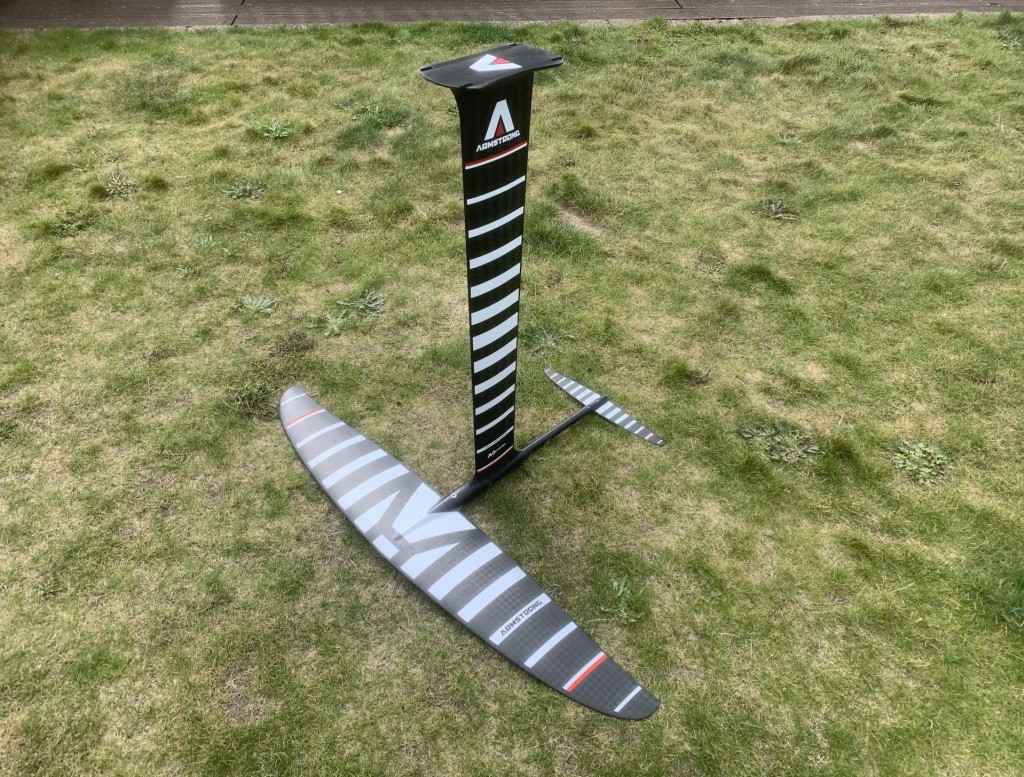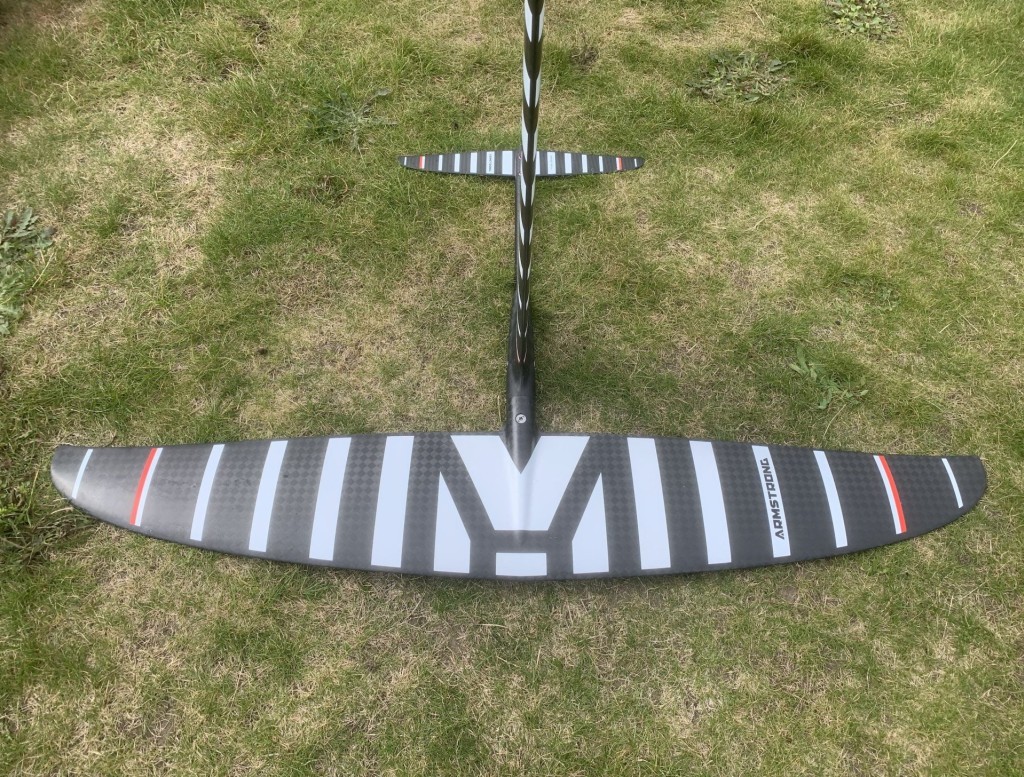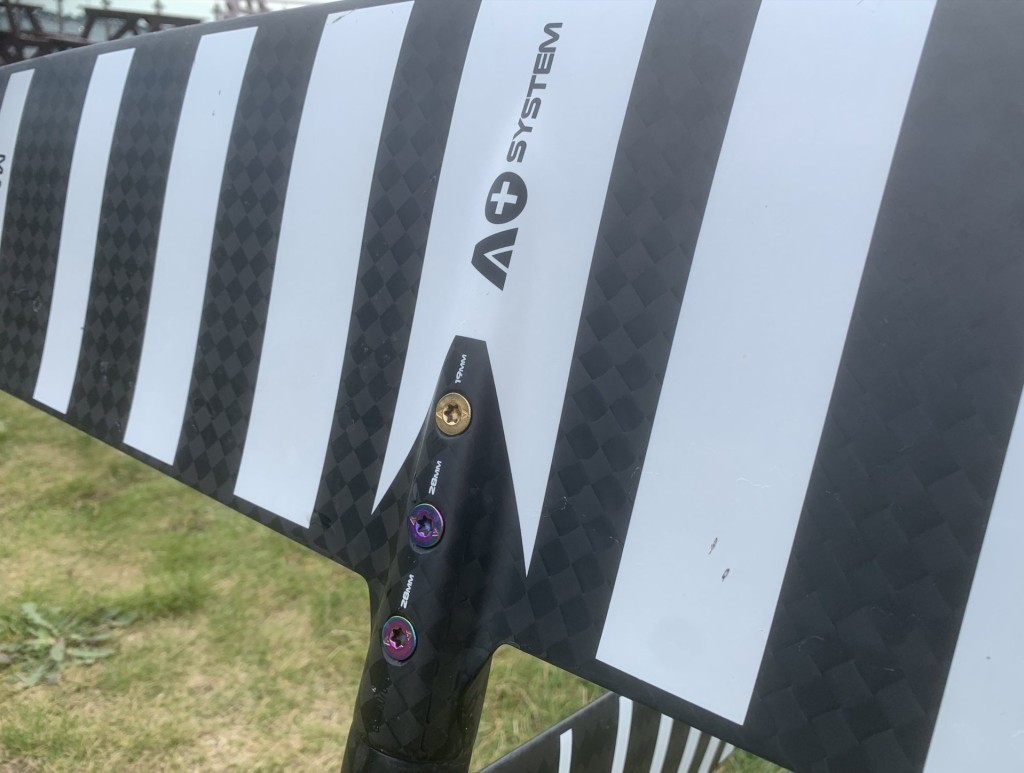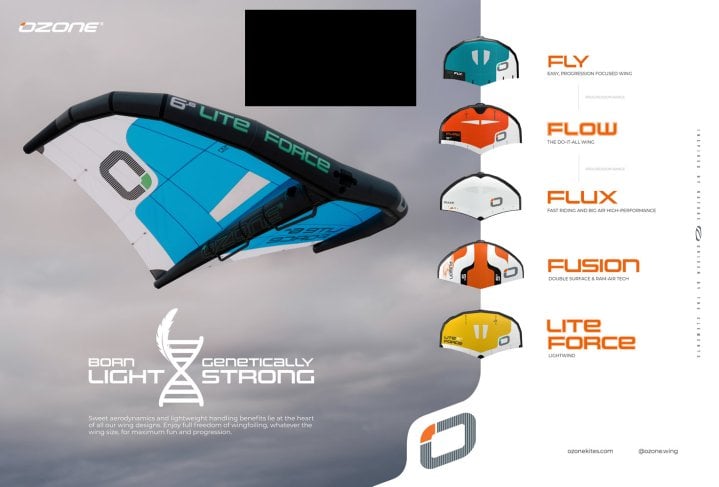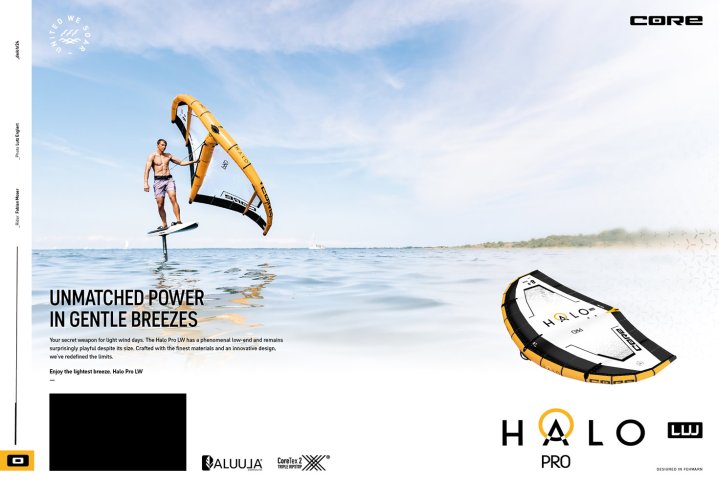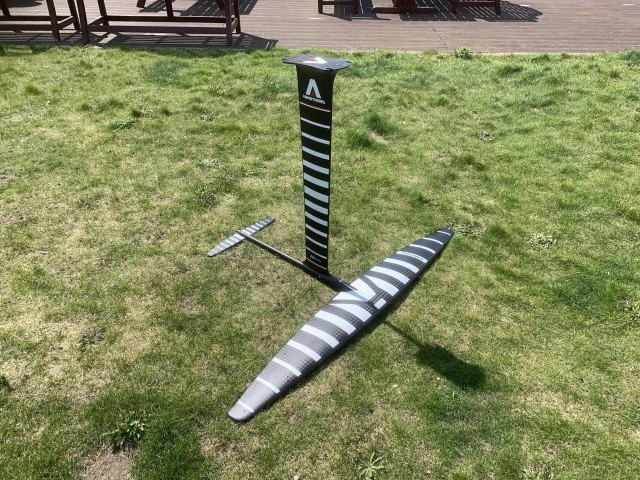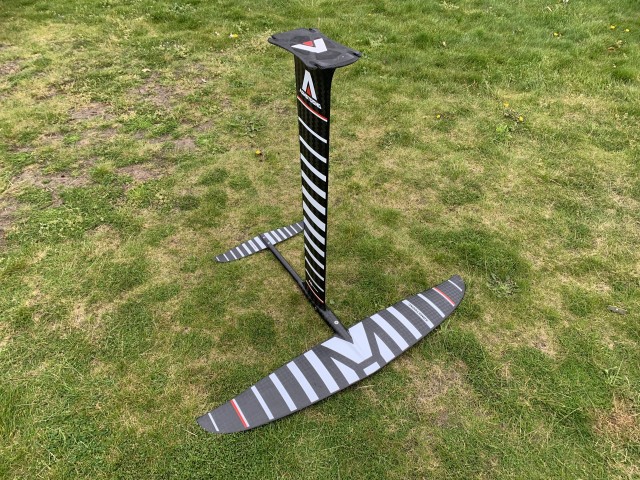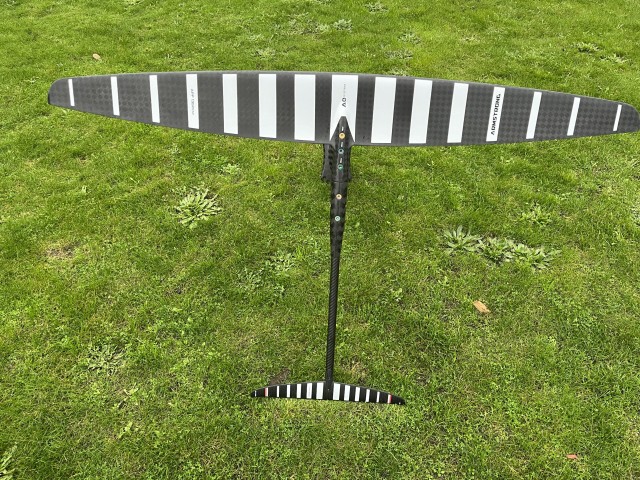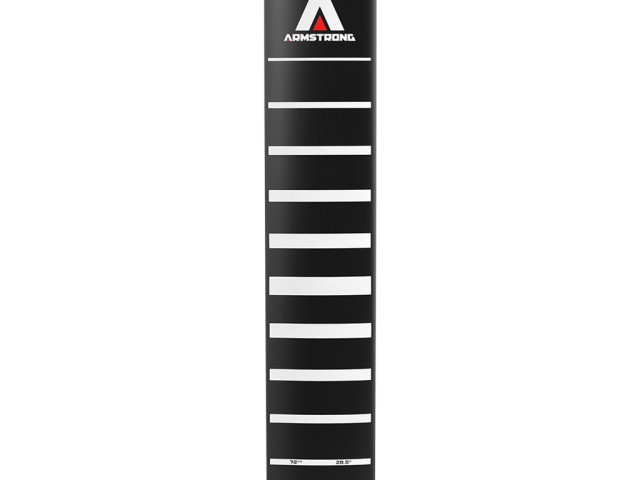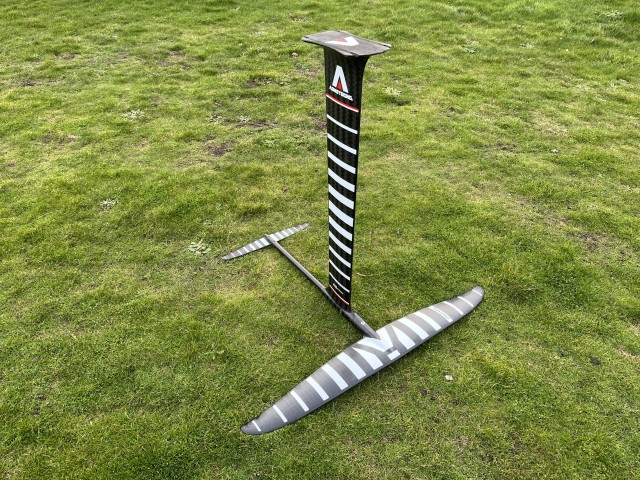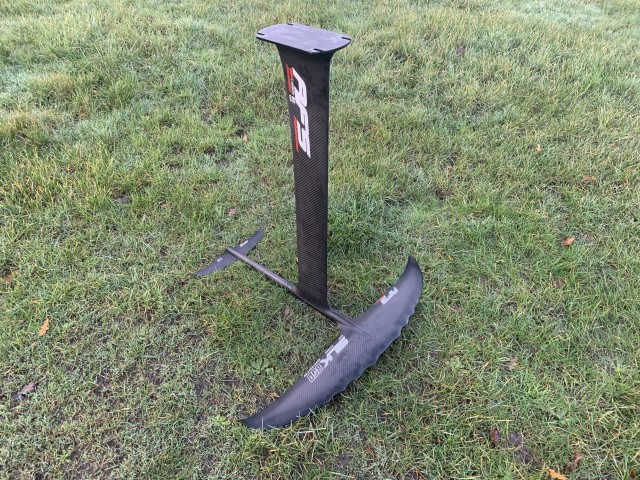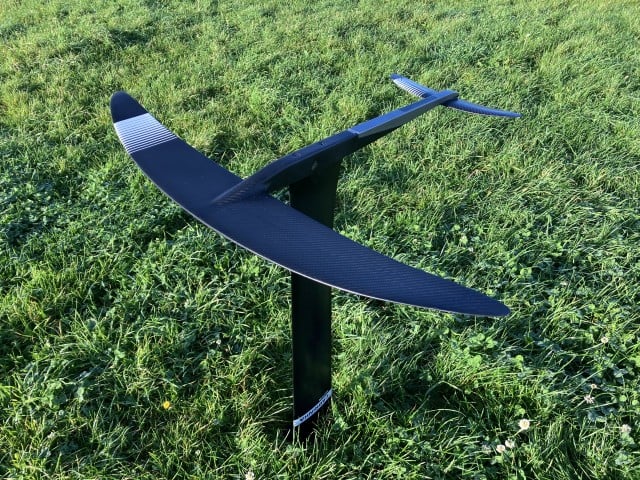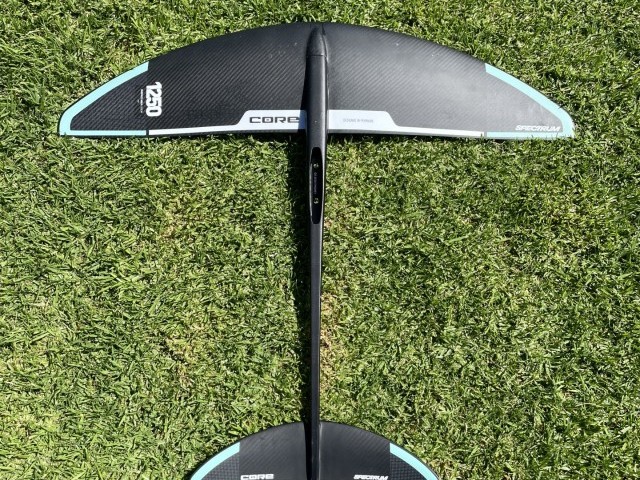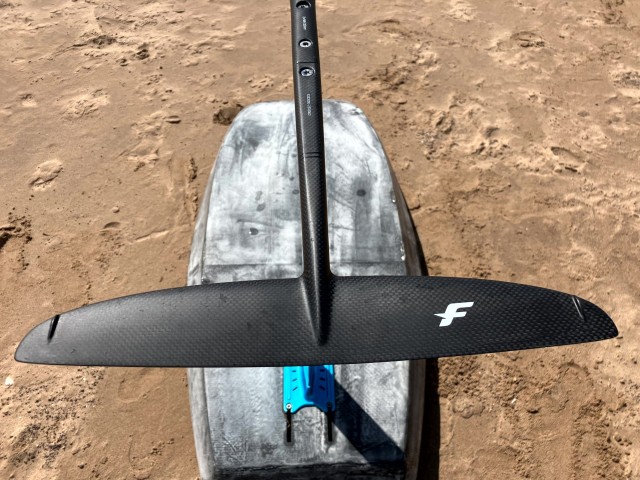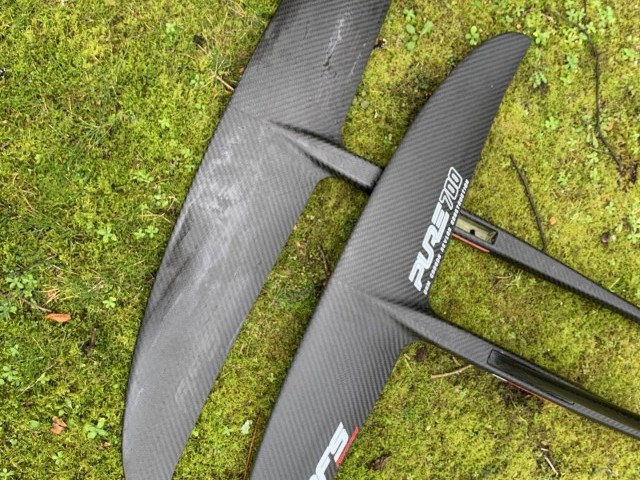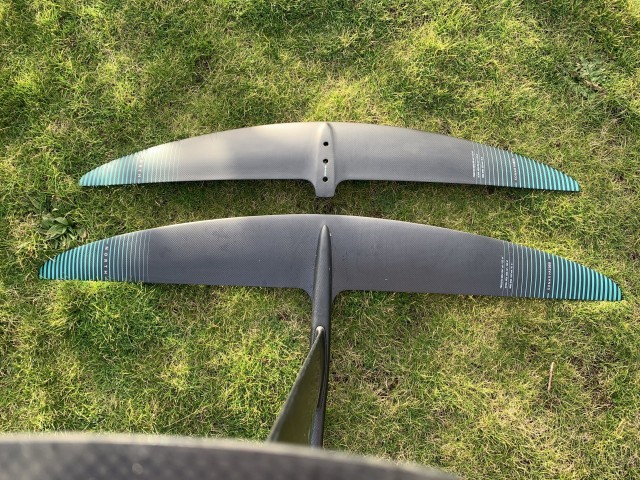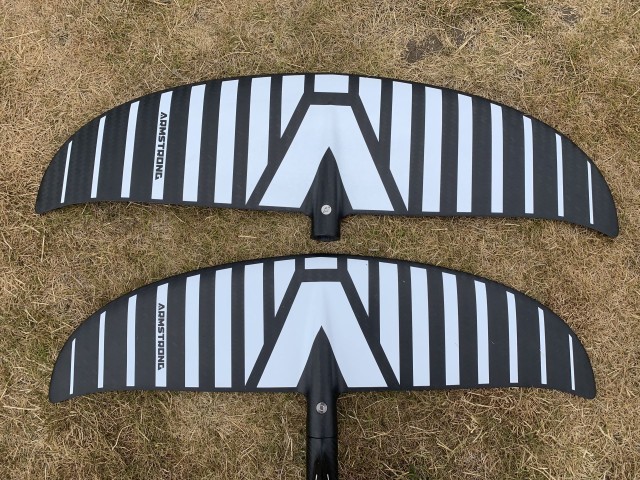At A Glance
In this test, I’m going to review both these MA wings along with the High Performance 655 mast. I’ll also go into a fair bit of detail as to the different on the different tails that I paired with the two wings. This summer, I’ve spent possibly the most amount of time on the MA1750 than I have any other bit of test gear ever. I’ll explain why once I’ve chatted through technical details of the foils.
So what are they for? Armstrong has added these two MA foils to the existing MA range. They’re designed to be light wind session savers and excellent tools for downwind. The foils have a high camber foil section, which Armstrong claims to broaden the speed range of the foils, meaning good low-end speed and control at faster speeds.
The foils also feature a fine leading edge section and tuned wingtip inflection, allowing for quick flow reattachment after a breach.
The 655 Performance mast that features in this test has been created by Armstrong for extra stiffness, maximum efficiency & optimal carbon layup for strength. As with all Armstrong gear, these foils came with titanium-plated hardware & high-quality protective bags for all the parts to keep your gear lasting longer.
Specifications
MA1750
Span: 1152mm
Area: 1750cm2
Aspect Ratio: 7.58
MA1475
Span: 1050mm
Area: 1475cm2
Aspect Ratio: 7.5
These foils arrived at the start of the summer, here in the UK that typically means small swell, light wind days, and the odd low-pressure system pushing some wind through. I was keen to put them to the test in whatever way I could.
On The Water
Dock start magic!
Armstrong is absolutely right when they say they have a broad range of speed. Both the MA1750 & 1475 have the low end to dock start while maintaining the high-end speed to cruise on the small waves out back. I had a ton of super fun sessions on both of the foils. I’d use the 795 Performance mast, 70 fuse (to extend the glide), and often the Flow235 tail (which made the turns fun). I found if I put the old CF300v2 tail on it reduced the stall speed even more so that I could rock start it (start from a standing platform with no run-up).
Big boat wake thieving
The 1750 gave me about a 3 to 4 minute flat water pump time, with a lot of effort of course! This gave me the idea of catching the Brittany Ferry wake as it came into Poole Harbour. Not as successful as I’d have liked in terms of wake size, but the foil got me there! Chris Burke from Poseidon Watersports kindly filmed it, see the attached YouTube video for more.
17 minute flight
At this point, I thought I’d reached the potential of this foil, how wrong I was… On a warm summer evening BHFoilers BBQ at the beach, we had a southerly wind chop rolling into the beach, even though the wind had died. We stuck the dock start ladder in the sea and went bump hunting. I quickly realised that the energy saving on the bumps on the way back in meant I’d be able to break my PB. First go and I hit a 10-minute flight, the foil being the perfect mix of pump, glide, and turning to get me on the waves & make quick decisions. Then local grom Oil Evans goes and does 16 minutes! I had to try again, this time I got 17 minutes of flight time (nearly 5km), again using the CF300v2 tail, I was well chuffed. Then Oil has to go & better me and do a 21-minute flight, massive kudos for that. It was a super fun evening of friendly competition.
The rock start downwinder
That evening gave me a lot of confidence in the MA1750, I suddenly knew that if I could do that sort of distance staying in one place, that it had serious potential for downwinding. So as soon as we got a decent south-westerly wind I headed to Hengistbury Head to attempt the rock start downwinder to Avon Beach. First go and I made it right to the beach, 3.7km & 12 minutes of bump & swell connecting fun (see attached photo). It actually blew my mind, suddenly completely new spots are opening up because of foils like this. Big respect to Rick Parkhouse (@allthefoils) for discovering it.
Something to point out here is that the nature of this downwinder means that if you fall, it’s a 25-minute paddle back to shore…which I’ve had to do on other foils when I’ve run out of gas. I actually breached the MA1750 at about the furthest point away from the beach I could have been. To my relief, just as Armstrong claimed, the wing handled it like a boss, instantly cleared the ventilation and I was able to continue foiling. Not to be overlooked when foiling at a spot with consequence!
Beach Starts
This is where the 655 Performance mast comes in. I’d watched a video of Nathan van Vuuren beach starting online, it suddenly dawned on me that I had the perfect setup. Why didn’t I think of that before? Head over to an article in this issue called ‘The Beach Start’ to read about mine & Jack Salmon’s first session. Without going into detail, it was eventually a success, the 655 mast was the perfect height, and the MA1750, 70 fuse & CF300v2 tail were the ideal tools to glide away with.
It’s not just the length of the mast that helps, the stiffness of the Performance masts gives an incredible amount of control that is essential to maintaining balance and increasing your take-off percentage.
Light wind winging …and what else?
When paired with the Armstrong A-Wing XPS 6.1m I could get both these foils going in exceptionally light wind. There’s a lot of foils that could do that, what was great about the MA’s is that they were still playful & fast enough to ride bumps & swell that came my way. Even without all of the dock start promotion above, they’d be a great purchase for someone looking for a light wind wing option or, if you’re on the heavier side, and want something with early lift that still rides waves well.
What else? I have no doubt that if I still had a downwind board in my possession I’d be flat water starting these foils and doing downwind runs. As long as you didn’t go out in fast ground swell, they’d be excellent for wind swell and small ground swell. I’ll report back when I get a hold of another downwind board!
Summary
The MA1475 & MA1750 have a much slower stall speed than their smaller counterparts, this allows for true versatility. Armstrong has also maintained a decent high-end speed & enough turning to make them super fun on the wave. I had an absolute blast riding these foils over the summer, as you’ll have read above, they gave me countless options to get my foiling fix. I’m going to find it very difficult to send these back that’s for sure!
Videos
This review was in Issue 17 of Tonic Mag.
Related
By Jack Galloway


